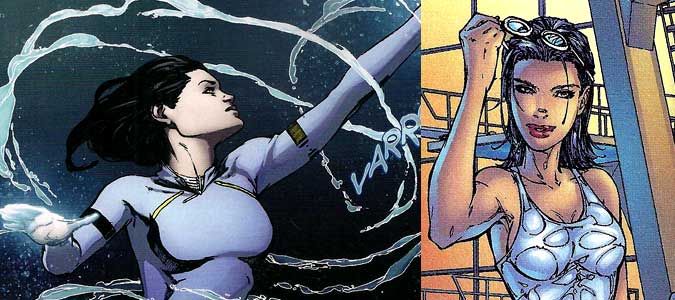This page may contain one or more affiliate links, which means that if you purchase a product through that link, I may receive compensation. The links will be identified with the text "affiliate link". Click to learn more.
Michael Turner before his death was a talented comic artist for DC Comics. His artwork of Supergirl, Witchblade, Superman, the Fathom comic and others made his work recognizable and and a superior asset to companies Top Cow Productions. He was discovered by Marc Silvestri which is told in an interesting interview.
What I did not realize though, was that he created his own comic book company, Aspen Comics, which still exists at the time of this writing. One of the titles, Fathom, (originally published by Top Cow actually) was a comic with a character so sexy that Michael Turner ended up writing an article for Wizard Magazine on drawing with sex appeal, using Fathom drawings as examples. Personally I think his secret was simply displaying scantily dressed women.
Fast forward something like 15 years and the Fathom comic was rebooted by Aspen, despite Michael Turner being long gone. So how did the two compare side by side? We need to take a closer look.
Fathom issue 1 from 1998 is a grand leap from Fathom comic issue 1 from 2013. Ironically though, not because of the plot, but rather where the story begins. In the original from 1998, it begins from the very beginning of the story as you may expect. However the reiteration from 2013 jumps into the plot with both feet. The reader begins rather confused from the start, albeit there is a brief paragraph inside the front cover explaining the entire original plot. I think the new version was attempting to use the technique where you tell a story in the middle, rather than waste time explaining how the plot got to where it was.
To elaborate really quick: Apsen Matthews is a marine biologist who later discovers that she is the mutt daughter of two species, one of which lives underwater. This gave her the ability to manipulate water and such. Her being the bridge between both species is the central plot point of the Fathom comic.
The artwork in the updated Fathom is much better than the older one. Sorry Michael Turner, but your body proportions suck. Do not get me wrong, Turner was a surprise talent out of no-where who learned his trade at lightning speed. And of course neither Fathom nor Aspen Comics would have been around if it were not for him. But he was not that great compared to his successor, Alex Konat. This new penciller has done a marvelous job making people look like actual people. The downside, of course, is the lack of original style that made Turner so recognizable, popular and iconic.
Any sort of Fathom comic that you might want to pick up is worthless monetarily, but grand in story. There is a great cover variant of Fathom 1 (Affiliate Link) from 1998 of the lead heroine leaping out of the what as dolphins follow. Unfortunately it is rarely seen or appreciated, since the cover version of her nude and surrounded by bubbles is far more popular.

